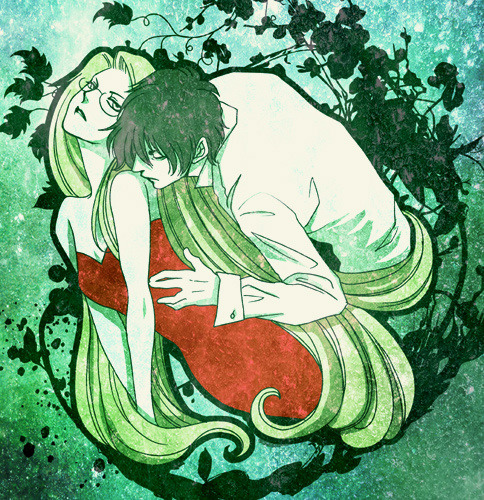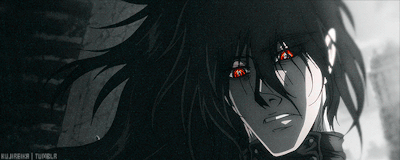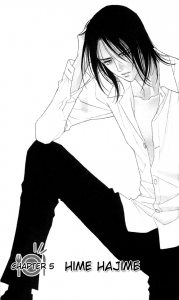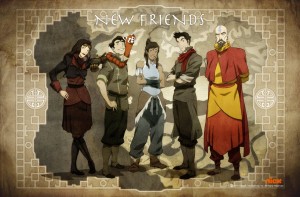
So one of my friends just discovered the morbid, juicy, horrifying joy of Hellsing Ultimate. I had been watching the OVAs on and off for the past few years, but I finally finished all ten of them sometime last year. Due to our recent conversations regarding the infamous Alucard, I felt the urge to pop by for a quick chat about our beloved vampire and what his archetype means to me as a writer.
Now, I’m sure you might be confused as to why I didn’t title this blog post “What Hellsing Ultimate Taught Me About Writing.” That’s mainly because this is less focused on the subject of writing and a little more focused on the general concept of villain protagonists, and bad boys in general. Hellsing Ultimate has certainly done a lot of things for me (scared me shitless, made me laugh my ass off, and prove that there is no going back once you find a vampire who has killed 3.4 million people attractive), but it’s not so much lessons as it is just eye opening introspection.
However, I’m getting ahead of myself. For those who aren’t in the know, Hellsing Ultimate is a set of Original Video Animations that are based on the manga entitled Hellsing by Kouta Hirano. It deals with Integra Fairbrook Wingates Hellsing, the head of an organization in charge of stopping supernatural threats under orders from the queen in the 1800’s. Integra is the master of Alucard, the No Life King, aka the most powerful vampire who has ever existed and will ever exist. There’s a reason his name is Dracula backwards, people, and you will find out why within the first five minutes of meeting him. I can only recommend the series to those with a strong stomach. The manga was first adapted as a short series with the same title in 2001, but it did deviate from the canon so it was remade with a bigger budget and better visuals in 2006. It is without a doubt the most violent and disturbed anime I’ve watched from start to finish. Granted, there are worse out there (oh God bless you if you’ve watched Berserk or Gantz, ugh), but Hellsing Ultimate is special because it’s so dark and twisted yet compelling and beautiful.
The reason why I’ve chosen Hellsing Ultimate as a subject for a blog post is because I’m beginning to realize why we have so many bad boys in modern day fiction of any media. Now, I use this term incredibly loosely with regards to Alucard. Alucard is a straight up villain, no bones about it. He murders other vampires and supernatural beings not because they hurt the innocent, but because it’s bloody fun to him. He’s a blood knight. He enjoys slaughtering his opponents and drinking their blood and generally being the strongest being in the known universe. By all accounts, we should be rightfully repulsed and terrified by him…and yet, we aren’t (or at least I’m not). Why? Because Alucard has layers. Tons and tons of layers.
For example, Alucard’s relationship to his master, Integra, is by far his biggest saving grace. If this were any other stereotypical mature shonen manga series, Alucard would’ve turned Integra into his slave and had his way with her, but this series was written by someone who has a taste for excellent writing. Alucard is without a doubt attracted to Integra because of her strength and unflinching sense of duty. It’s relatively clear that if she allowed it, he would be her lover, but she doesn’t for several different reasons. Throughout the series, we come to find out that he not only respects Integra, but he has genuine affection for her as a character. The proof comes in the very last scene of the OVA (BIG HONKIN’ SPOILER ALERT) where after a thirty year absence, Alucard returns to his beloved master. The normally stoic Integra tells him that she’s become nothing more than a grandma (slang term, she didn’t have kids, the translation is “obaa-chan”, in case you’re wondering), and how does Alucard respond? “That’s fine.” And then you see the tenderness in his eyes as they exchange the final lines:
Integra: Welcome home, Count.
Alucard: I am home, Countess.
Holy. Crap. I’ve watched Alucard tear hundreds of people apart with his bare hands (and teeth) like they were dinner rolls, and yet this guard dog of infinite wickedness becomes gentle in the presence of his master. Hell, one of the most telling things about Alucard is that he loves the fact that he’s her servant. He only threatens her once when she was a teenager and they met for the first time. He doesn’t attack her or sexually assault her or anything. That is incredibly interesting to me as both a writer and just a fangirl in general. Mind you, Integra is NOT a vampire. She has no powers. She’s just a tough dame and that was enough to impress the most powerful vampire in the world. You can’t beat that, man. That’s good writing.
Now, let’s swing around to the main course. My attachment to Alucard has crept through in my recent work, as I’ve come to realize while I’m editing the final draft of She Who Fights Monsters. I admit that my main villain, Belial, has more than a little Alucard in him. First of all, Belial’s character model looks like this in my head:
Second of all, Belial has exactly one redeeming quality and that is his strange connection with Jordan. If you’ve read the first novel, you know that he is not a nice man. He’s a murderer and a liar and he has every intention of ruling the earth someday. However, I could have just made him a one note villain (after all, Mulciber is a static villain), but something told me to go a different way with him. I like the idea that not all villains are 100% pure evil with nothing else to them. I like seeing villains who have layers and depth instead of just twirling their mustaches and plotting the demise of the protagonist. I especially like if they can be civil about it, because there’s nothing as amusing as a villain who is polite and well-spoken, but can also tear your head off without blinking. It’s fun to explore the concept of restraint, because if we’re being honest, both Alucard and Belial could have taken what they wanted at a moment’s notice, but that would defeat the purpose of their characters.
Bad boys tend to stick with me more than good guys (for the most part, trust me, I like my nice guys like Hercules, Harry Dresden, Kenshin Himura, Phoebus, and Suou Tamaki) because there’s the constant struggle between being evil and having a less-than-monstrous side to them. It’s exactly why I’ve become a total sucker (haha, I made a PUN) for Integra/Alucard fanart now. I love seeing this gigantic, long-limbed, maniacal bad ass so tenderly wrapped around his master like a big evil puppy. It’s so incredibly ridiculous and yet it works. Alucard, and subsequently Belial, are not Jerks with Hearts of Gold, but they do have a soft spot for exactly one person in their lives, and that’s why I enjoy them. I think that’s why our monster men are the ones we remember more readily than our valiant knights in shining armor.
…*cough* And it doesn’t hurt that Alucard looks like this on a semi-regular basis:

I REGRET NOTHING.
And I hope you were able to get something out of this post other than “OMFG BAD BOYS R SO CUTE.” I swear, I had a point I was making. I just got distracted by the pretty. No, seriously, though, don’t fall in love with Alucard. He’d eat you for breakfast and keep your blood in a wine glass by his coffin at night. That’s not a euphemism either.
I bid thee good day, my darlings. Thanks for reading.
-Kyoko

